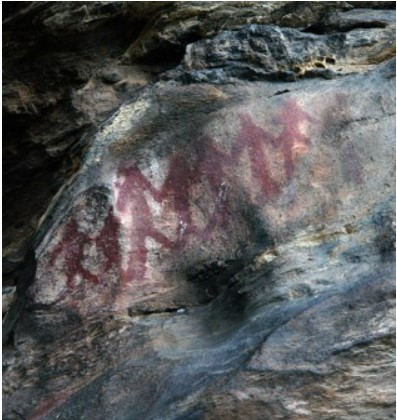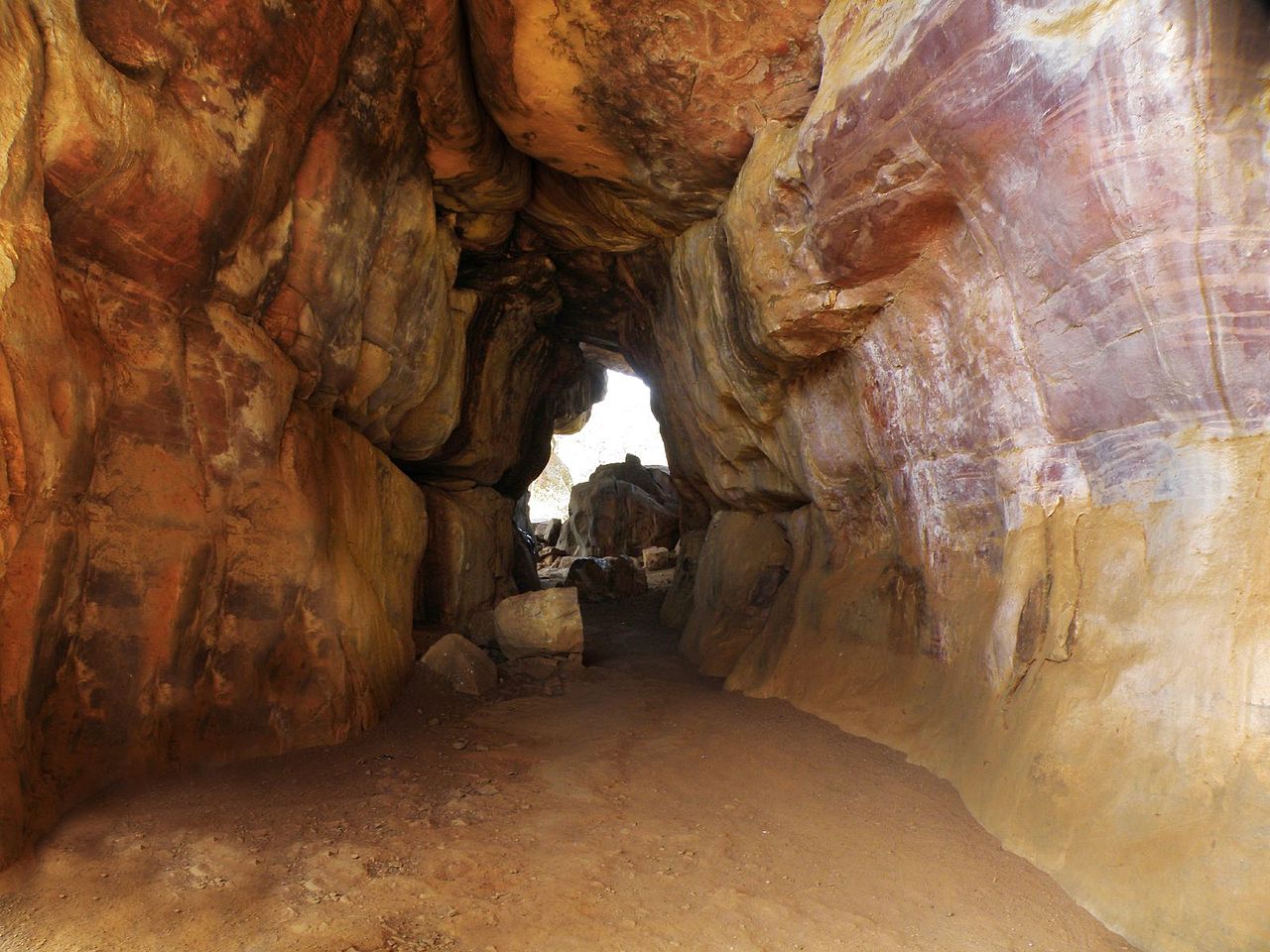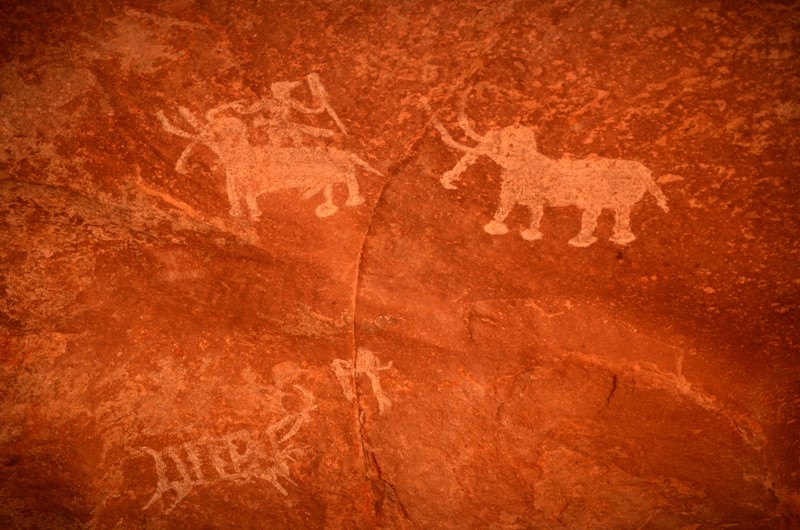Indian-paintings / Indian Paintings / Prehistoric Paintings
Introduction
Prehistory refers to the ancient times when there was no written language or the written word, and hence no books or written documents. Painting and drawing were the oldest art forms practiced by human beings to express themselves, using the cave walls as their canvas.
Proliferation of artistic activities in Upper Paleolithic Times
- Prehistoric paintings have been found in many parts of the world, and by the Upper Paleolithic times, there was a proliferation of artistic activities.
- Around the world, the walls of many caves from this time are full of finely carved and painted pictures of animals which the cave-dwellers hunted.
- The subjects of their drawings were human figures, human activities, geometric designs, and symbols.
- In India, the earliest paintings have been reported from the Upper Palaeolithic times.
Significance of Prehistoric Paintings
These prehistoric paintings help us to understand early human beings, their lifestyle, their food habits, their daily activities and, above all, they help us understand their mind and the way they thought.
Discovery of Prehistoric Rock Paintings in India
- The first discovery of rock paintings in India was made in 1867–68 by an archaeologist, Archibold Carlleyle, twelve years before the discovery of Altamira in Spain. Cockburn, Anderson, Mitra and Ghosh were the early archaeologists who discovered a large number of sites in the Indian sub-continent.
- Remnants of rock paintings have been found on the walls of caves situated in several districts of Madhya Pradesh, Uttar Pradesh, Andhra Pradesh, Karnataka, and Bihar. Some paintings have also been reported from the Kumaon hills in Uttarakhand.
Categories of Paintings
- The rock shelters on banks of the River Suyal at Lakhudiyar, about twenty kilometres on the Almora– Barechina road, bear these prehistoric paintings. Lakhudiyar literally means one lakh caves.
- The paintings here can be divided into three categories: man, animal, and geometric patterns in white, black, and red ochre.
- Humans are represented in stick-like forms. A long-snouted animal, a fox, and a multiple legged lizard are the main animal motifs. Wavy lines, rectangle-filled geometric designs, and groups of dots can also be seen here.
- One of the interesting scenes depicted here is of hand-linked dancing human figures. The granite rocks of Karnataka and Andhra Pradesh provided suitable canvases to the Neolithic man for his paintings. There are several such sites, but more famous among them are Kupgallu, Piklihal, and Tekkalkota.

Hand-linked dancing figure, Uttarakhand
Evolution of Prehistoric Paintings
Upper Paleolithic Period
- The paintings of the Upper Palaeolithic phase are linear representations, in green and dark red, of huge animal figures, such as bisons, elephants, tigers, rhinos, and boars, besides stick-like human figures.
- Most paintings consist of geometrical patterns. The green paintings are of dancers and the red ones of hunters.
- The largest and most spectacular rock-shelter is located in the Vindhya hills at Bhimbetka in Madhya Pradesh.
- The caves of Bhimbetka were discovered in 1957–58 by eminent archaeologist S. Wakankar.
- The themes of paintings found here range from mundane events of daily life in those times to sacred and royal images.

Bhimbetka caves, MP
Mesolithic Period
- The largest prehistoric paintings discovered in India belong to this period. During this period, the themes multiply, but the paintings are smaller in size.
- Hunting scenes predominate. The hunters are shown wearing simple clothes and ornaments.
- In some paintings, men have been adorned with elaborate head-dresses, and sometimes painted with head masks also.
- In the pre-historic paintings found in India, animals are depicted in their naturalistic style, while human beings are depicted in a stylistic manner.
- Prominent Mesolithic sites where these paintings are found include Langhnaj in Gujarat, Bhimbetka, and Adamagarh in Madhya Pradesh, and SanganaKallu in Karnataka.

Chalcolithic painting
- The paintings of the Chalcolithic period reveal the association, contact, and mutual exchange of requirements of the cave dwellers of this area with settled agricultural communities of the Malwa plains.
- Many times, Chalcolithic ceramics and rock paintings bear common motifs, such as cross-hatched squares, lattices, pottery, and metal tools.
- The primitive artists used many colors, including various shades of white, yellow, orange, red ochre, purple, brown, green, and black.
- Red was obtained from haematite (geru), green from a green variety of a stone called chalcedony, and white might have been made out of limestone. To make the paint, the rock or mineral was first ground into a powder, which was then mixed with water and a thick or sticky substance such as animal fat or gum or resin from trees. Brushes were made of plant fiber.
- The colors have remained intact because of the chemical reaction of the oxide present on the surface of the rocks.
- The pre-historic paintings found in India are unique in their depiction of both men and animals engaged in the struggle for survival.
- The paintings of individual animals show the mastery of skill of the primitive artist in drawing these forms.
- Both proportion and tonal effect have been realistically maintained in them.
- These paintings have survived for such a long period of time due to the natural conditions of the caves, such as a lack of light and moisture, and also because of the chemical reaction of the oxide present on the surface of the rocks.
- More animal figures than human figures are depicted in cave paintings probably because animals played a significant role in the lives of prehistoric humans.
- Animals were sources of food, clothing, and other essential resources.
- Therefore, prehistoric humans would have observed and studied the behavior of animals closely, leading to their depiction in cave paintings. Additionally, animals may have been seen as powerful and awe-inspiring, leading to their frequent depiction in cave paintings.

